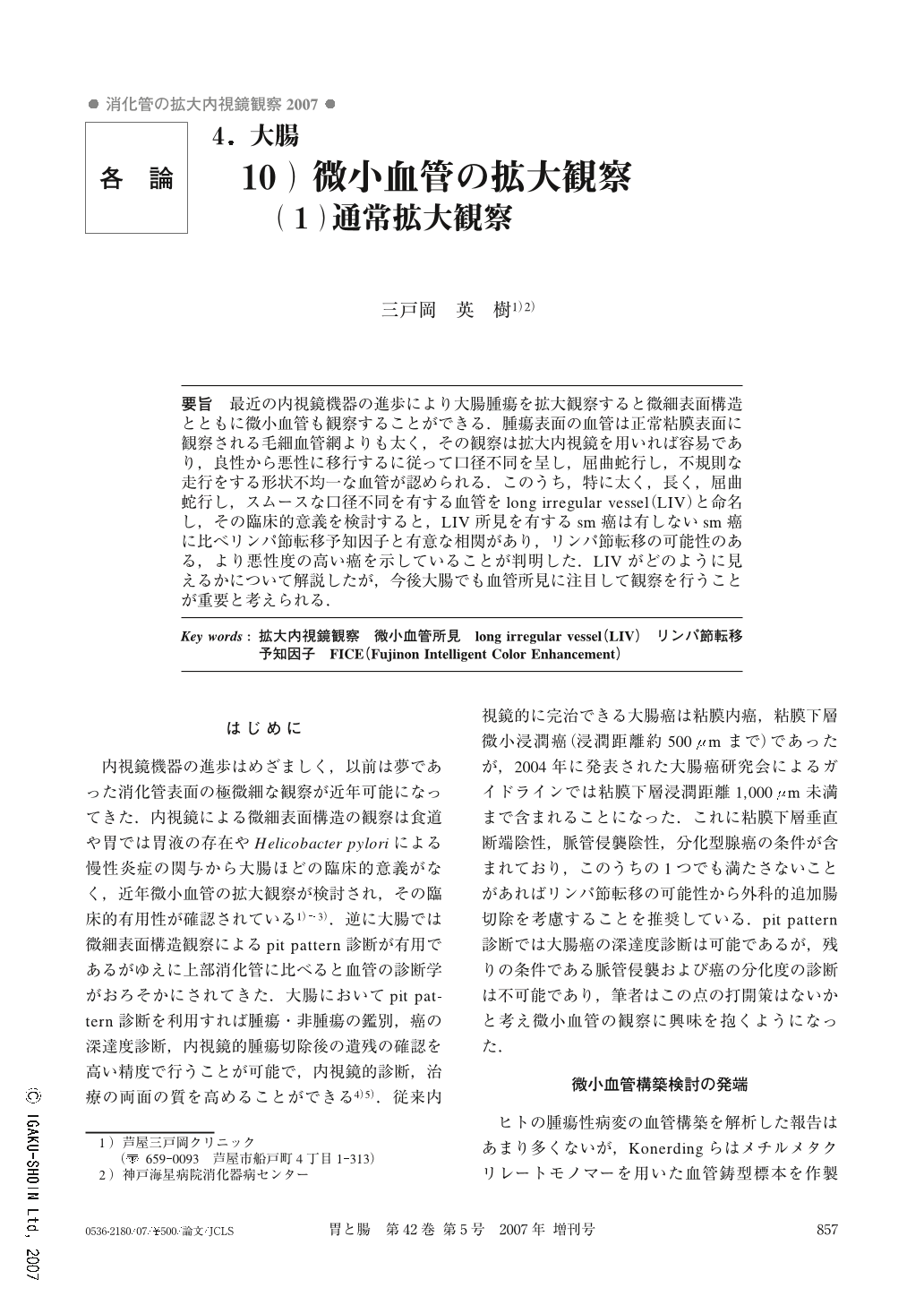Japanese
English
- 有料閲覧
- Abstract 文献概要
- 1ページ目 Look Inside
- 参考文献 Reference
- サイト内被引用 Cited by
要旨 最近の内視鏡機器の進歩により大腸腫瘍を拡大観察すると微細表面構造とともに微小血管も観察することができる.腫瘍表面の血管は正常粘膜表面に観察される毛細血管網よりも太く,その観察は拡大内視鏡を用いれば容易であり,良性から悪性に移行するに従って口径不同を呈し,屈曲蛇行し,不規則な走行をする形状不均一な血管が認められる.このうち,特に太く,長く,屈曲蛇行し,スムースな口径不同を有する血管をlong irregular vessel(LIV)と命名し,その臨床的意義を検討すると,LIV所見を有するsm癌は有しないsm癌に比べリンパ節転移予知因子と有意な相関があり,リンパ節転移の可能性のある,より悪性度の高い癌を示していることが判明した.LIVがどのように見えるかについて解説したが,今後大腸でも血管所見に注目して観察を行うことが重要と考えられる.
It is easy to observe microvascular findings of colorectal tumors by the latest magnifying colonoscopy, because the size of microvascular architecture of colorectal tumors are thicker than that of normal capillary rings. Submucosal massive invasive cancers show thicker micro-vessels with irregular size, shape, and distribution than adenomas and intramucosal and submucosal minimum invasive cancers. In contrast, some submucosal massive invasive cancers show elongated thicker micro-vessels with rather smooth tortuosity. We termed those characteristic vessels as long "irregular vessels" (LIV). From our investigations, it was thought that magnified colonoscopic findings of LIV can predict risk factors of lymph node metastasis in submucosal invasive cancers. In this article, we demonstrated how LIV was visualized by colonoscopy. Diagnosis of colorectal tumors by magnified colonoscopic findings of microvascular architecture should be highly regarded.

Copyright © 2007, Igaku-Shoin Ltd. All rights reserved.


